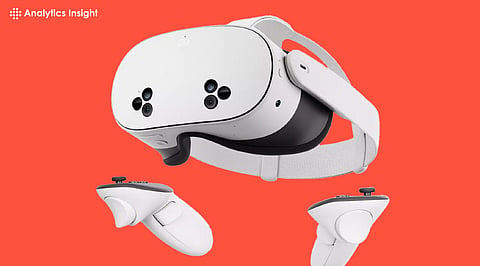

VR headsets offer unparalleled immersion and interactive experiences.
Cutting-edge graphics, performance, and comfort drive innovation in VR gaming.
VR technology transforms gameplay, enabling new levels of engagement and interaction.
Virtual reality has evolved from a niche curiosity to a revolutionary force in modern gaming, offering unparalleled immersion and interactive experiences. With cutting-edge graphics and responsive gameplay, top VR headsets are redefining the gaming landscape for both console and PC enthusiasts.
As VR technology advances and games become increasingly sophisticated, the right headset is essential for gamers seeking to elevate their experience to new heights.
The availability of VR on mainstream gaming platforms has generated significant interest from both casual and competitive gamers. Consoles like PlayStation now support standalone VR headsets, while PC gaming continues to accommodate highly customizable, high-spec headsets. Advances in motion tracking, display resolution, and haptic feedback are driving this trend, providing more immersive experiences than ever before.
Today, game developers design with VR immersion at the forefront, integrating physical movement, spatial audio, and gesture controls to enhance storytelling and gameplay mechanics. As hardware technology continues to advance rapidly, VR gaming is poised to become a central aspect of the industry's future.
When evaluating a high-end VR headset, several key aspects are crucial to consider. The refresh rate and resolution impact both the smoothness and quality of the images. The field of view plays a significant role in determining how immersive a scene feels. Additionally, the choice between internal tracking and external sensors can affect the ease of setup and precision of the experience. Comfort and build quality are also important factors, especially during long gaming sessions. Lastly, compatibility with different platforms is essential for seamless switching between PC and console gaming.
Designed specifically for the PlayStation 5, PlayStation VR2 has OLED HDR 2000 x 2040 per-eye displays. Eye tracking provides tighter response and dynamic rendering. Enhanced haptics and adaptive triggers come with their Sense controllers, providing sensory realism. Though it demands a wired setup with the console, simplicity of use, and integration fit for console-oriented players aiming for high-end gaming.
Being PC-friendly and standalone, Meta Quest Pro is aimed at power users and content creators. With pancake lenses, mixed reality support, and a streamlined build, it combines usability with innovation. Its color passthrough enables the mixing of virtual and real spaces, while the Snapdragon XR2+ processor enables demanding applications. Though in the higher price range, its cross-platform use merits it a place in the premium segment.
Its industry-leading refresh rate of 144Hz and expansive 130-degree field of view are just a couple of features that have made Valve Index an ever-popular choice among PC gamers. Outside base stations supply accurate tracking, which provides levels of responsiveness never seen before. Off-ear speakers in the headset build immersive, space audio without prodding the ears. SteamVR supports the headset, featuring a broad game library, but the installation requires more space and calibration.
Designed to target professionals and gaming enthusiasts, the HTC Vive Pro 2 has a stunning resolution of 2448 x 2448 per eye. It features adjustable interpupillary distance and a durable build with support for long-duration usage without any fatigue. Although designed for optimal tracking use with Vive base stations, it is supported by SteamVR software. For its high-performance simulation and action games, it is the hardware of choice for hardcore PC gamers.
As a high-end VR headset, Varjo Aero offers retina-grade quality through aspheric lenses and mini-LEDs. Eye tracking and IPD adjustment provide personalized experiences for individual users. Although intended for enterprise purposes, consumer-grade VR platform support appeals to tech enthusiasts seeking the best performance. Cost and system requirements restrict accessibility but make it the standard for graphics quality.
Console-based VR solutions such as PlayStation VR2 focus on easy-to-use simplicity, plug-and-play, and platform-first content. They appeal to consumers interested in curated games and fewer technical options. PC-based VR headsets, however, focus on modularity, graphics quality, and larger collections of titles. PC gamers will likely appreciate support for mods and custom peripherals.
The choice between the two is generally based on ecosystem preference, budget, and game preferences. People who are interested in flight simulators, sandbox worlds, or experimental games would opt for PC, whereas story-driven games and convenience opt for console VR systems.
AI and cloud computing are advancing the "spatial computing" metaphor, which will redefine VR gaming in the future. The industry is embracing adaptive gameplay, photorealistic rendering, and biometric integration to enhance immersion. Wireless VR devices are reducing the dependence on cables, allowing for a more seamless experience without compromising performance.
Cross-platform support and expanded multiplayer options are gaining popularity. As more development studios adopt VR as a core platform, we can expect shorter hardware cycles, more comfortable headsets, and an increasingly diverse catalog of both AAA and indie games optimized for virtual reality gaming.
The high-end VR headset market is expanding and gamers have a wealth of premium options to choose from. With innovation, performance, and comfort driving progress, selecting the ideal headset requires balancing personal preferences with technical capabilities. Whether you're drawn to immersive storytelling or competitive gaming, today's VR technology offers unparalleled experiences that can transform the way you play and interact with games.
